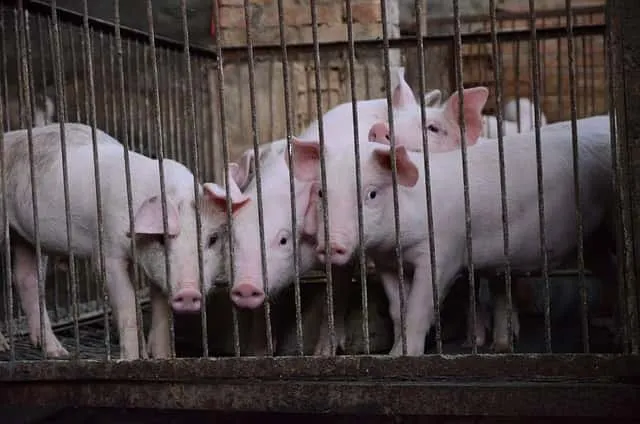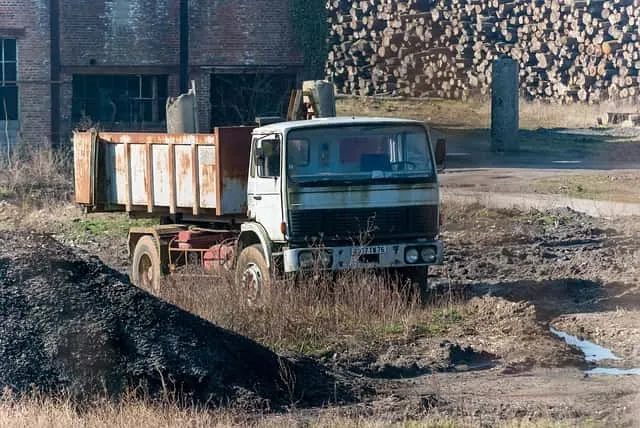Since the first case of African swine fever was reported in China in August 2018, the disease has spread rapidly across the country, causing huge losses to China's pig industry. The outbreak exceeded the expectations of the entire industry, prompting all pig farms to raise biosecurity control to an unprecedented level.

In the process of preventing and controlling African swine fever, the industry has gone through the stage of searching for "special medicine" and "vaccine", and finally proved that biosafety measures are still the most effective means of prevention and control. Disinfection is the most important link in biosafety prevention and control. There was a time when domestic and imported disinfectants were in short supply, and disinfectants have become the standard configuration of veterinary drug manufacturers.
There are many types of disinfectants on the market, with a dazzling array of dosage forms, formula combinations and experimental data, which undoubtedly increases the difficulty of selection for farmers. Feedback information collected from the front line of farming shows that pig farms usually use a variety of disinfectants, including caustic soda, glutaraldehyde, peracetic acid, compound phenols and potassium persulfate complexes. However, many people still have misunderstandings about how to correctly select and use disinfectants.
When using disinfectants, such as disinfection passages for personnel and disinfection of pigs, attention must be paid to the health and safety of personnel and livestock. For example, glutaraldehyde is carcinogenic to humans, and iodic acid disinfectants are irritating to the skin, eyes and mucous membranes of pigs; when disinfecting vehicles, empty houses and equipment, the protection of vehicles and equipment must be considered. For example, caustic soda is highly corrosive and is not recommended for disinfection of empty houses and vehicles; for the disinfection of pig farm roads and the environment, attention must be paid to the environmental protection requirements of the surrounding soil and water quality. Strong acid disinfectants should not be used excessively to avoid damaging the surrounding environment of the pig farm.
The first, second and third generation disinfectants currently used in pig farms are difficult to simultaneously meet the requirements of broad spectrum, high efficiency, safety, long-term use, ensuring livestock and poultry health, no drug resistance and no pollution. As a fourth generation disinfectant, the disinfection characteristics of chlorine dioxide can just take these conditions into account and have good application and promotion prospects in pig farms.
Characteristics and sterilization mechanism of chlorine dioxide
Chlorine dioxide is a yellow-green to orange-yellow gas. As the fourth-generation broad-spectrum, highly efficient, safe, non-toxic green disinfectant, it has been widely used in industry and life. Currently, it is more commonly used in aquaculture than in pig farming. Common forms include chlorine dioxide solution and chlorine dioxide effervescent tablets.
Chlorine dioxide has a strong bactericidal ability and can kill all pathogenic microorganisms including bacterial spores, bacterial propagules, mycobacteria, fungi and viruses.

Its bactericidal mechanism is that it has strong adsorption and penetration ability on the cell wall of pathogenic microorganisms, can effectively oxidize the enzymes containing sulfhydryl groups in the cells, quickly inhibit the synthesis of microbial proteins to destroy the microorganisms, and thus achieve the purpose of disinfection and sterilization. When chlorine dioxide comes into contact with pathogenic microorganisms, it releases new ecological oxygen and hypochlorous acid molecules, producing a powerful bactericidal and disinfecting effect.
Comparison of chlorine dioxide with other disinfectants
Referring to the "Key Points of Clean Technology for Prevention and Control of African Swine Fever" compiled by the Lanzhou Institute of Animal Husbandry and Veterinary Drugs of the Chinese Academy of Agricultural Sciences in September 2019, we have sorted out the categories of disinfectants and their toxic and side effects (see Table 1). It can be seen that chlorine dioxide, as a fourth-generation disinfectant, is non-toxic, safe to use and has a wider range of applications.
Table 1: Disinfectant categories and toxic side effects
category Product Examples Impact on people Impact on livestock Environmental impact
Chlorine dioxide Chlorine dioxide disinfectant Non-toxic, low irritation Non-toxic, low irritation Safety
Chlorine-containing disinfectants Hypochlorous acid, sodium hypochlorite, sodium dichloroisocyanurate Great stimulation Great stimulation Easy to decompose
Aldehyde disinfectant Glutaraldehyde, formaldehyde Carcinogenic, highly irritating Carcinogenic, highly irritating Severe water pollution
Phenolic disinfectants Methylphenol Low toxicity Low toxicity Less water pollution
Quaternary ammonium disinfectants Benzalkonium bromide, bispyribac bromide Low toxicity, low irritation Low toxicity, low irritation Low pollution
Potassium persulfate Potassium persulfate Low irritation Low irritation Easy to decompose
Table 2: Selection of different disinfectant usage scenarios
Application Recommended disinfectant types
Roads and vehicles Production lines, epidemic areas and roads: chlorine dioxide, phenols, peracetic acid, chlorine-containing disinfectants; vehicles and transportation tools: chlorine dioxide, phenols, peracetic acid, chlorine-containing disinfectants
Production and processing area Disinfection pool and foot pool in the locker room at the main entrance: sodium hydroxide, chlorine-containing disinfectants; livestock and poultry buildings, fences, wooden structures, cement surfaces, and floors: chlorine-containing disinfectants, quaternary ammonium salts, peracetic acid, and potassium persulfate; production and processing equipment and utensils: chlorine dioxide, quaternary ammonium salts, peracetic acid, and potassium persulfate; environmental and air disinfection: chlorine dioxide, hypochlorous acid, and peracetic acid; drinking water disinfection: chlorine dioxide, quaternary ammonium salts, potassium persulfate, sodium hypochlorite and other chlorine-containing disinfectants; personnel skin and hand disinfection: iodine-containing disinfectants, hypochlorous acid, ethanol + iodine tincture
Office, Bio-area Clothes, hats, and shoes: chlorine-containing disinfectants, peracetic acid, and 2% sodium bicarbonate solution (boiling); offices, dormitories, public canteens, and other places in epidemic areas: chlorine dioxide, chlorine-containing disinfectants, peracetic acid, and potassium persulfate; personnel entering and leaving, isolation suits, rubber shoes, etc.: chlorine dioxide, chlorine-containing disinfectants, peracetic acid, and potassium persulfate

Application of chlorine dioxide disinfectant in American pig farms
Although chlorine dioxide is not yet popular in American pig farms, taking the 10% chlorine dioxide effervescent tablets (20g/tablet) produced by Beijing Zhongcheng Fangyuan Pharmaceutical Co., Ltd. as an example, chlorine dioxide actually has many potential application scenarios in the disinfection of American pig farms (see Table 3).
Table 3: Recommended usage plan for 10% chlorine dioxide effervescent tablets, 20g/tablet
Disinfection objects Concentration/(mg/kg) Add water per tablet/L How to use
Environmental disinfection 20~40 10~20 Spray, rinse
Disinfection of empty rooms and equipment 20~40 10~20 Soak, rinse
Disinfection of pigs 20~40 10~20 spray
Waterline cleaning 50~80 5-8 soak
Drinking water disinfection 0.4~0.8 500~1000 Add drinking water
Treatment of foot and mouth vesicle ulcer 50~100 4-8 Soak or wipe the affected area
Treatment of fungal diseases in animals 50~100 4-8 Apply or spray on affected skin
Fruits and vegetables 50~80 5-8 soak
3.1 Cleaning the waterline
Water line pollution in pig farms has become a common problem. You can use 50-80ppm chlorine dioxide to soak the water line for 2-4 hours. Use its strong oxidizing property to decompose the biofilm in the water line, kill the bacteria, and then drain the water line.

3.2 Drinking water disinfection
Chlorine dioxide can be added regularly to the water tower or drinking water system of American pig farms. On the one hand, it ensures the health of drinking water - chlorine dioxide can quickly remove iron and manganese in water, destroy phenols, sulfides, cyanides and other harmful substances; on the other hand, it can keep the water line clean. Especially after adding antibiotics and vitamins to the water line, using 0.4-0.8 PPm of chlorine dioxide drinking water can effectively remove the sediment left by the addition of drugs in the water line and keep the water line clean.
3.3 Spray disinfection
Because chlorine dioxide has the characteristics of broad spectrum, high efficiency and safety, it can kill germs instantly upon contact and has no irritating odor, thus ensuring the safety of operators and the respiratory health of livestock and poultry. Therefore, chlorine dioxide with a concentration of 20 to 40 ppm can be used for spray disinfection of pigs, empty house environment disinfection, road disinfection and vehicle disinfection.
3.4 Instrument disinfection
Chlorine dioxide can effectively kill a variety of pathogens and is non-corrosive to equipment. American pig farms can use 10-20 ppm concentration of chlorine dioxide solution to soak and rinse pig farm equipment and equipment to extend the service life of the equipment.
3.5 Living area and kitchen use
Chlorine dioxide can also be used in the living areas of American pig farms, such as mopping the kitchen floor, washing clothes and shoes, etc. In addition, vegetables entering the pig farm can also be briefly soaked in chlorine dioxide solution and then rinsed with clean water.
3.6 Cleaning the water curtain
The water curtain in the pig farm is the most difficult to clean and is the most likely to hide dirt. It is recommended to add chlorine dioxide effervescent tablets to the circulating water before using the water curtain, and continuously circulate and soak the water curtain to effectively remove water dirt and impurities, ensure the normal use of the water curtain, and purify the air in the pen.
3.7 Fumigation and air purification
Chlorine dioxide aqueous solution can also be used for fumigation. It can react with harmful gases such as phenol, sulfide, hydride, etc. in the air to achieve the purpose of purifying the air.
3.8 Vegetable cleaning and preservation
You can soak purchased fruits, vegetables, chicken, duck and fish in an 80 ppm chlorine dioxide aqueous solution for a short time, which can kill surface microorganisms without destroying vegetable fiber tissue, affecting the taste and flavor, and the nutritional value of meat, and can also remove the fishy smell of fresh meat. However, it is more recommended that American pig farms provide their own vegetables and plant an area on the farm, which can not only increase the fun of breeding, but also reduce the risk of pathogen transmission.
The disinfection effect of chlorine dioxide is still affected by factors such as pH value, temperature, disinfectant concentration, organic matter or antagonistic substances, number of pathogenic microorganisms, action time and disinfection frequency. Before using chlorine dioxide for disinfection in the complex environment of American pig farms, it is necessary to clean the disinfected objects and surfaces to ensure the best disinfection effect.
The development prospects of chlorine dioxide disinfectant in US pig farms

Chlorine dioxide was recognized as a highly effective disinfectant by the United States Department of Agriculture and the Environmental Protection Agency in 1985, approved as a food additive, and listed as a Class A1 safe and highly effective disinfectant by the World Health Organization and the Food and Agriculture Organization of the United Nations.
Chlorine dioxide plays an important role in major epidemic prevention and control, especially during the prevention and control of the new coronavirus in 2020. On March 20, 2020, the Blue Sky Rescue Team used chlorine dioxide disinfectant to fully disinfect the Wuhan Railway Station.
In the development of animal husbandry, as the intensive degree of pig farming in the United States increases, equipment and instruments become more advanced and intelligent, and the number of high-quality practitioners increases, the concept of biosafety and prevention and control awareness are more recognized. Safer, effective, convenient and efficient disinfectants will come into being.
As a fourth-generation disinfectant, chlorine dioxide has not been widely used in the U.S. livestock industry, but has been increasingly used in the medical field. It is believed that in the rapidly developing U.S. pig farming industry, chlorine dioxide will soon replace the first, second, and third generation disinfectants currently used, make up for various disinfection defects and biosafety control gaps, and have broad development prospects in the U.S. pig farming industry.
We also need American livestock practitioners to spread the concept of biosafety that keeps pace with the times in their actual work, increase publicity on the advantages of chlorine dioxide disinfectants, and expand their application in pig farming.